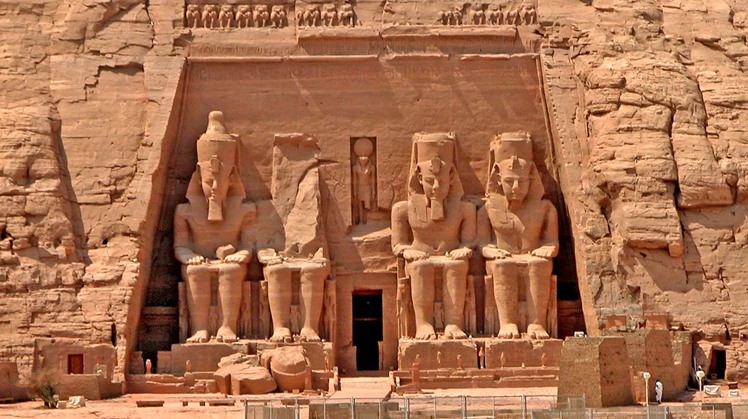An archaeological site located on the western bank of Lake Nasser, about 290 km southwest of Aswan, and is one of the sites of the "Nubian Antiquities" included in the UNESCO list of World Heritage Sites.
They date the Temple of Abu Simbel to the era of King "Ramses II" (1279-1212 BC). They were carved on a high sandstone plateau 4 km south of their current location, to which they were moved in a campaign to save the monuments of Nubia after the construction of the High Dam in 1960 AD.
The site of Abu Simbel includes two temples, the Great Abu Simbel Temple, which was dedicated to the cult of "Ra Hor Akhti" and "Amon Ra" Ptah and the king himself, and the small Abu Simbel temple, which is located 100 meters from the first temple, which was dedicated to the goddess Hathor and Queen Nefertari, the main wife of the king.
The name "Abu Simbel" was given to this site by the Swiss traveler "Johann Ludwig Burckhardt" known as "Ibrahim Burckhardt", who discovered the site in 1813 AD when a child named "Abu Simbel" took him to him.
The importance of the great Abu Simbel temple is due to its association with the phenomenon of the sun perpendicular to the face of the statue of Pharaoh Ramses II twice a year. The first coincides with the anniversary of his birth October 22 and the second on February 22, the anniversary of his coronation. The temple also features a unique architectural design; Its facade was carved into the rock, and it was decorated with four huge statues of King Ramses II, each of which is about 20 m long. The facade is followed by a corridor leading into the temple, which was carved into the rock at a depth of 48 m, and its walls were decorated with scenes recording the king’s victories and conquests, including the Battle of Kadesh in which he defeated the Hittites. , in addition to religious scenes depicting the king in his relations with Egyptian deities.
As for the small temple of Abu Simbel, it was given by King Ramses II to Queen Nefertari, his main wife and his lover. Six colossal statues of equal size adorn its facade, representing the king and queen, in a clear demonstration of the high status that the queen enjoyed with her husband. The temple extends into the plateau at a depth of 24 meters, and its interior walls are decorated with a group One of the wonderful scenes depicted the queen worshiping various deities either with the king or alone.
 Sun, Oct. 31, 2021
Sun, Oct. 31, 2021